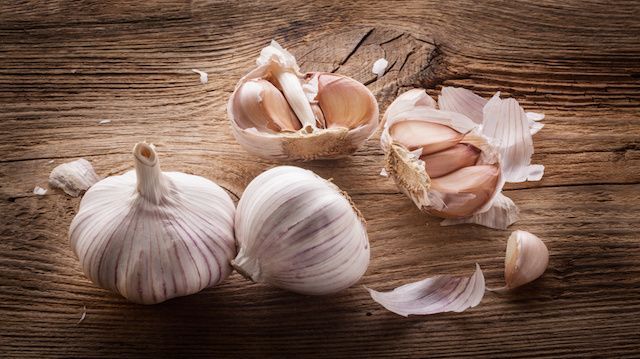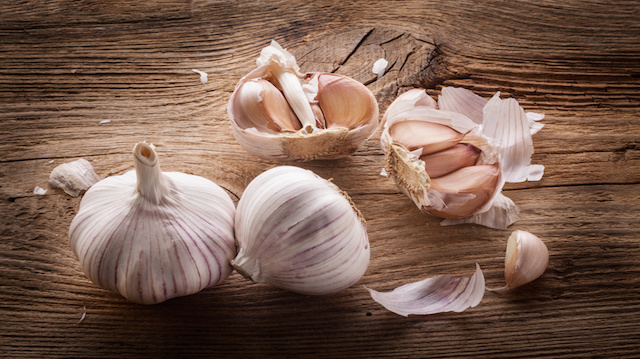
With autumn thoroughly underway, allergies become a problem for many of us. If you find yourself sniffling, carrying around tissues, and rubbing your eyes, don’t despair — read on to discover powerful foods to fight those seasonal allergies!
Even if you are someone who deals with allergies in the spring or summer, working on a robust nutritional regime can go a long way toward reversing these troubles.
But first, the bad news…
Experts report that allergy season may be getting longer, coinciding with global warming and pollution levels. Those nasty pollen-producing plants are able to live longer in the absence of colder temperatures, and the pollen has a more potent effect.
This means there is no time like the present to start arming ourselves against that irritating powder by bolstering our immune systems with — you guessed it — fresh, real food. Because runny noses just aren’t sexy!
Foods that fight allergies naturally
It’s time to take a trip to the farmers’ market! There are so many delicious seasonal choices that can help stave off allergy symptoms. Here’s what to stash in your reusable totes:
Garlic: A 2012 study published in the International Journal of Food Science & Technology reported that fresh, raw garlic was effective at suppressing the release of a substance called beta-hexosaminidase. The inhibition of this substance is an effective measure against allergic reactions. The researchers noted that fresh garlic was more effective than aged black garlic.
Furthermore, garlic contains a hefty dose of vitamin C, which is well known as an immune system supporter. It also calms the release of histamine and ameliorates its effects. Most of us are familiar with the term antihistamine in reference to the over-the-counter drugs commonly used to soothe allergies. That’s because histamine is a compound naturally released by the body when it is irritated enough to trigger an allergic reaction. Garlic slows this reactive process, and also speeds the breakdown of histamine so the reaction isn’t as severe.
As if that isn’t enough, garlic also suppresses certain enzymes, including prostaglandins and thromboxanes, which stimulate the release of inflammatory compounds and may be tied to allergies.
 How to get the most benefit from garlic? Purchase whole cloves, and avoid garlic that has been processed in any way. Pre-peeled cloves are usually stored in plastic, and crushed ones are usually packaged with soybean oil or other unwanted toxic oils. Instead, just buy a whole head of garlic, break apart the cloves, and then crush them with the flat side of a large chef’s knife. This makes the cloves much easier to peel, and also incites a process whereby an active medicinal ingredient called allicin starts to multiply.
How to get the most benefit from garlic? Purchase whole cloves, and avoid garlic that has been processed in any way. Pre-peeled cloves are usually stored in plastic, and crushed ones are usually packaged with soybean oil or other unwanted toxic oils. Instead, just buy a whole head of garlic, break apart the cloves, and then crush them with the flat side of a large chef’s knife. This makes the cloves much easier to peel, and also incites a process whereby an active medicinal ingredient called allicin starts to multiply.
Try mixing fresh, raw, chopped garlic into homemade sauces and dips like guacamole, salsa, pesto, hummus or tzatziki. They are all so easy to make in a food processor — yum!
Broccoli: This healthy staple is rich in two allergy fighting nutrients, namely vitamin C and folate. As mentioned above, vitamin C helps solve that histamine cascade that tends to take over the body when allergens are present. Broccoli contains about 80 mg of vitamin C per cup, but since a daily intake of up to 1000 mg is recommended for allergy sufferers, supplements can be helpful too.
The folate content of broccoli is helpful because it boosts the immune system and brings down inflammation, which can be a result of the reaction to allergens. Studies have found that people with a lower folate intake tend to have more severe allergic and respiratory symptoms.
Try eating lightly steamed broccoli with a little olive oil and sea salt sprinkled on top. Another tasty recipe is finely chopped broccoli in a raw slaw-style salad tossed with yogurt, garlic and other diced veggies of your choice.
Tomatoes: Here is another vitamin C champion to help reduce those allergies. The Mediterranean diet is rich in tomatoes and other vegetables in the nightshade family. Studies examining the merits of the Mediterranean diet have found that fewer allergy symptoms are seen in areas where this diet is the mainstay.
How about that freshly chopped salsa we mentioned earlier?
Leafy greens: The whole family of leafy greens is an allergy-fighting powerhouse. It includes kale, collard greens, spinach and chard. All greens are rich in vitamin C, folate and vitamin E, which bolster the immune system against the onslaught of allergies.
Other green vegetables, like avocados and asparagus, are also great sources of folate.
The best way to enjoy leafy greens is lightly sautéed in grass-fed butter with some fresh herbs and coarse salt. They should be cooked only until they are just starting to soften and have turned a vibrant green.
Pastured eggs: We know that good-quality eggs provide too many great nutrients to count, but how do they reduce allergies? Turns out they are one of the few foods that contain vitamin D, a nutrient that has been strongly connected with a healthy immune response. Studies have clearly demonstrated that those with lower vitamin D levels are more likely to suffer from allergies. Oily cold-water fish like salmon and mackerel are also a great source of vitamin D, as are mushrooms.
Eggs also offer vitamin E and vitamin B5 (pantothenic acid), which support a healthy immune system and balanced inflammatory response.
Try enjoying eggs in a great big scramble full of all of the nutritious vegetables in this list!
Nuts: Experts recommend nuts like walnuts and pecans, which are rich in anti-inflammatory compounds like omega-3 fatty acids and vitamin E. These nutrients help tame the inflammation that make the nose and throat feel scratchy and stuffy during an allergic reaction.
Nuts make a great, easy, on-the-go snack. Alternatively, they can be sprinkled on top of salads to add flavor and texture.
Onions: This humble vegetable is a superhero in the kitchen. In fact, the whole allium family is great for fighting allergies — we already discussed garlic, and leeks belong on this list, too. That’s because all of these vegetables contain quercetin, a compound that behaves similarly to antihistamine medications.
Be sure to mix onions or leeks into any stir-fries or soups you cook up.
Healthy oils and fats: We are always recommending good, natural fats, and it’s no different with allergies. An allergic reaction is closely tied to inflammation, and fats have a soothing and healing effect which calms the system. Asthma sufferers in particular are said to benefit from increased consumption of omega-3 fats.
Our favorite choices include extra-virgin olive oil, coconut oil, red palm fruit oil, hempseed oil, flaxseed oil, avocado oil and walnut oil. These should all be cold-pressed, minimally processed and organic whenever possible.
Cultured and fermented foods: Did you know that at least 70 percent of your immune system is located in the gut? That’s why consuming beneficial bacteria can play a big part in strengthening the immune system so allergic reactions are minimized or eliminated.
Try making your own sauerkraut, kombucha or kefir, or buy high-quality unpasteurized products from the health-food store.
Let’s see if we can really bring down those allergies in the coming season! Get started today with healthy, delicious recipes.
—Liivi Hess
When shopping for avocado oil, look for an extra virgin, unrefined avocado oil. Unrefined avocado oil is dark green and has a floral smell with a mild flavor. The only avocado oil we use in our kitchen is from Ava Jane’s Kitchen. Try a bottle for free today!
Sources:
http://www.healwithfood.org/allergies/aged-garlic-treatment.php
http://www.healwithfood.org/allergies/foods.php
http://www.eufic.org/page/en/show/latest-science-news/fftid/diet-allergies-asthma
http://www.neilmed.com/neilmedblog/2011/06/nutrition-for-allergies
https://fnic.nal.usda.gov/diet-and-disease/allergies-and-food-sensitivities
http://www.weather.com/health/news/foods-help-stop-seasonal-allergies-20141002

